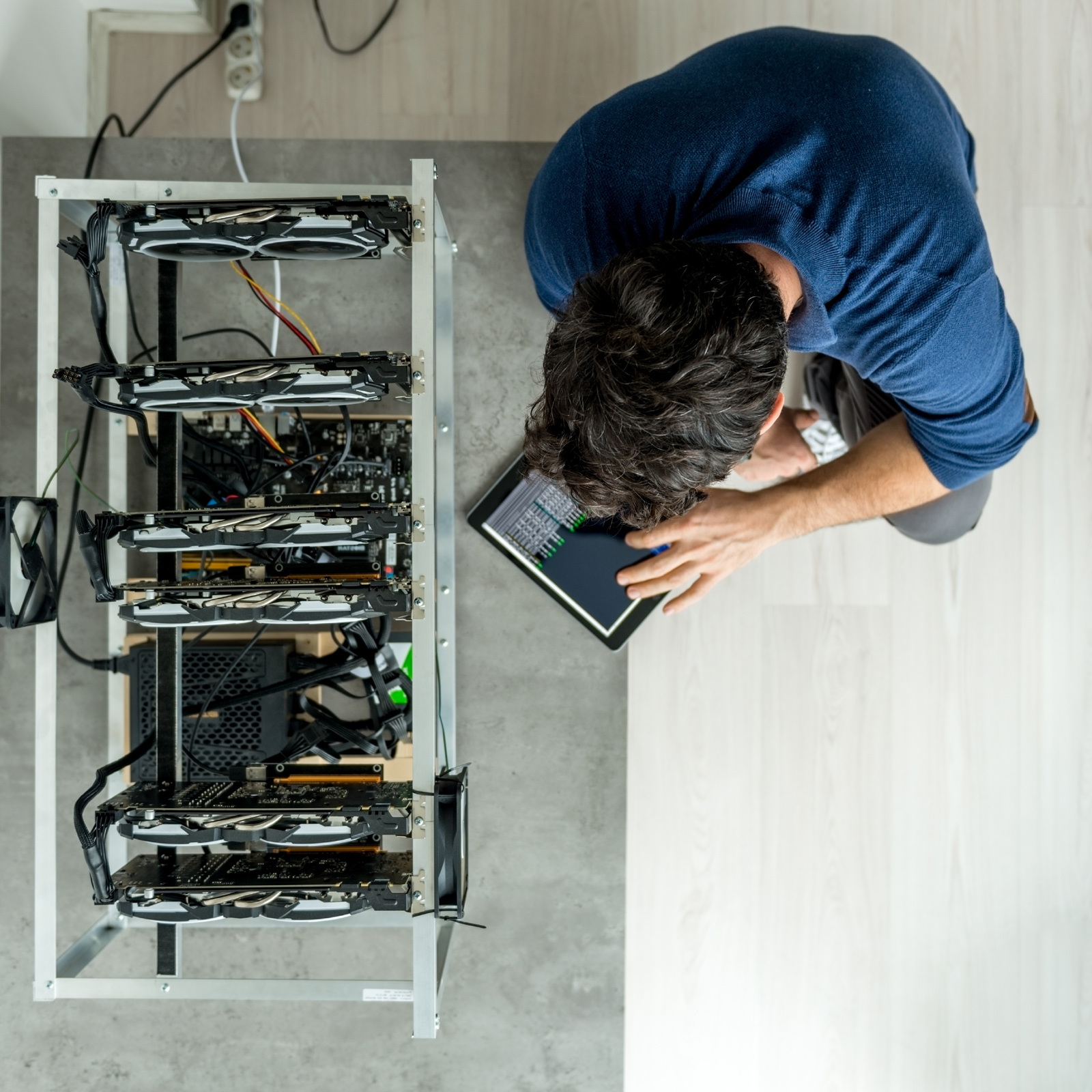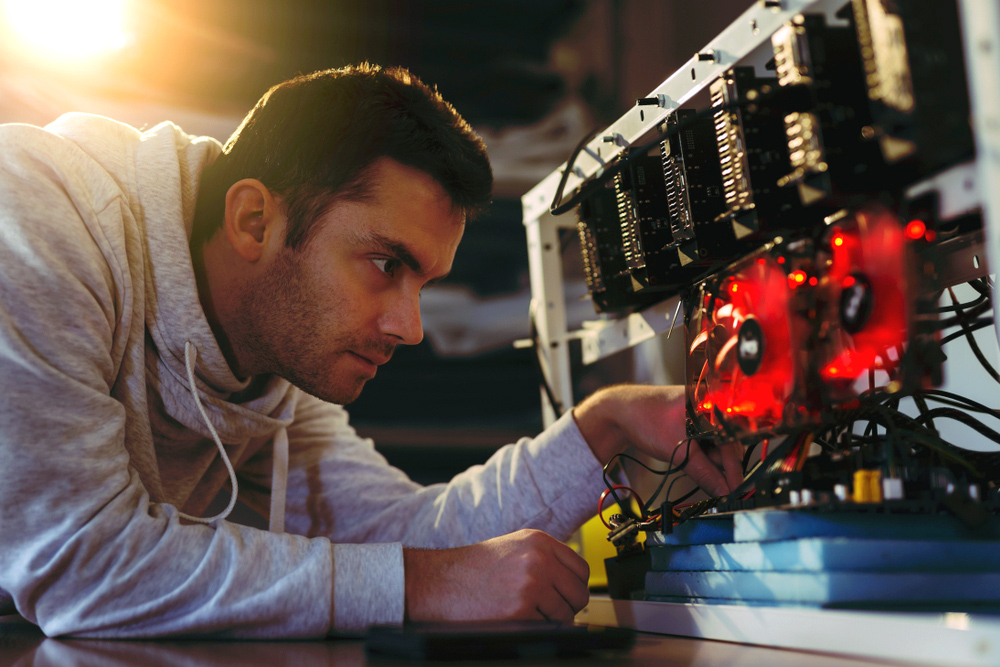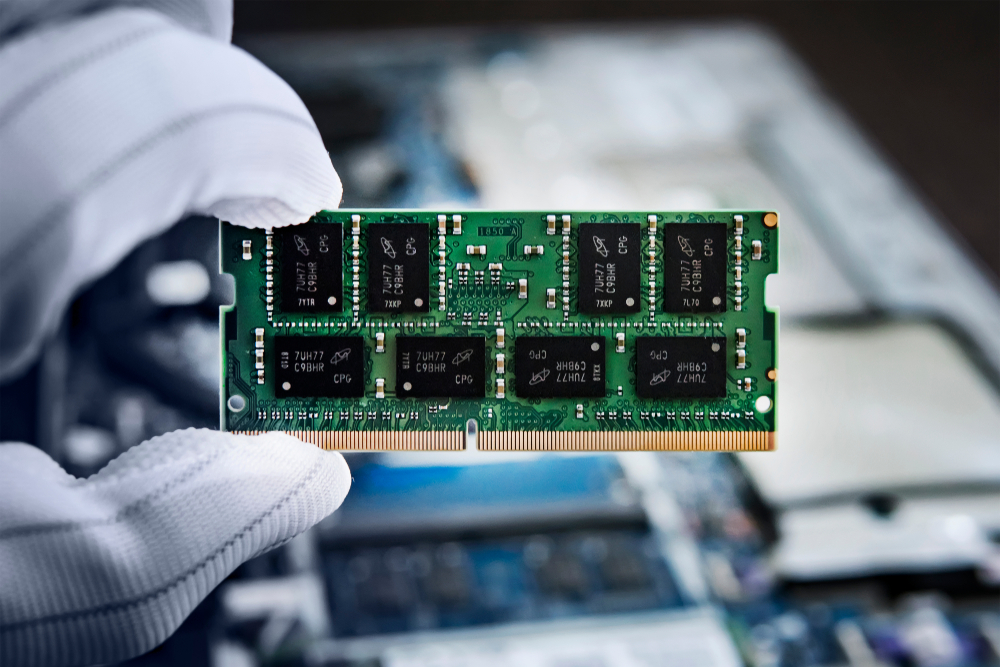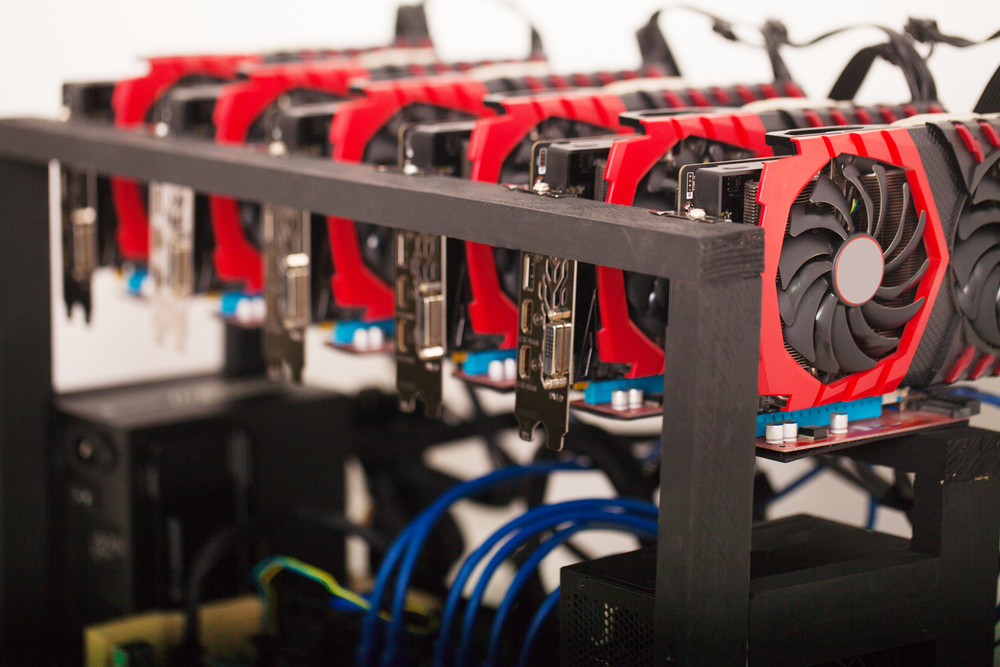
Cryptocurrency mining has in many respects become an industrialized business. But despite the concentration of hashing power, the increasing difficulty and diminishing returns, in some cases it can still be profitable to mint coins as an amateur miner, probably the most honest way to earn some digital cash. Here’s a guide on how to build a mining rig.
Also read: Iran to Allow Mining Hardware Imports, Cyprus Creates Fintech Hub
Is It Late to Get Started With Crypto Mining?
 The reduced market capitalization of digital assets, in comparison to last year’s all-time highs, has inevitably affected the profitability of cryptocurrency mining. That’s a fact of life but still there’s a number of other factors that can influence the outcome of mining – electricity rates, regulations, hardware prices, and even climate, to name a few. Their weight in the equation may vary significantly in different locations, from one jurisdiction to another.
The reduced market capitalization of digital assets, in comparison to last year’s all-time highs, has inevitably affected the profitability of cryptocurrency mining. That’s a fact of life but still there’s a number of other factors that can influence the outcome of mining – electricity rates, regulations, hardware prices, and even climate, to name a few. Their weight in the equation may vary significantly in different locations, from one jurisdiction to another.
In times when major producers of highly specialized equipment like Bitmain and Bitfury are building ASIC chips and rigs for mining bitcoin with ever-increasing productivity and efficiency, some say crypto mining in homes, basements and garages is a dying hobby. Add to that reports about GPU manufacturers like Nvidia losing interest in the crypto segment of the market, miners in Iceland exploring better opportunities in other sectors and the future of amateur mining starts to look bleak.
But that’s not necessarily the case. There are a number of altcoins whose developers continue the struggle to maintain ASIC-resistance. There are many countries where the costs of mining are relatively low – in some parts of Russia, for example, electricity rates are below $0.04 USD per kilowatt. For many enthusiasts around the world at-home mining is not a lost cause, not yet. Many of them can still support the family budget without huge expectations for revenue and profit.
Setting up a Home Mining Rig With GPUs
 Catering to the crypto community, Decenter, a popular Russian platform supported by experts, developers, and investors, has answered many questions asked by crypto enthusiasts. Recently, the information portal published a guide to building mining rigs that encompasses the basic steps to becoming an amateur miner. The outlet has done its best to protect wannabe miners from unnecessary expenses and help them make the optimal choices, and ultimately make a buck or two.
Catering to the crypto community, Decenter, a popular Russian platform supported by experts, developers, and investors, has answered many questions asked by crypto enthusiasts. Recently, the information portal published a guide to building mining rigs that encompasses the basic steps to becoming an amateur miner. The outlet has done its best to protect wannabe miners from unnecessary expenses and help them make the optimal choices, and ultimately make a buck or two.
Rig frame – The experts at Decenter recommend that you choose an aluminum one. The metal is more rigid in comparison with wood, it’s not flammable and is а good conductor of electricity which is a serious advantage as all components of the mining system must be grounded.
Motherboard – It should be able to support between 4 and 8 video cards which means it must have at least 4 PCI-E ports. Some of the most popular motherboards are based on P45, P43, and P35 chipsets – Gigabyte GA-EP35-DS3L and Asus P5Q Deluxe, for example. An inexpensive option is the Z270-based Gigabyte GA-Z270P-D3 which powers up to 6 GPUs and costs less than $100. Gigabyte GA-970A-DS3P is a good alternative for AMD fans, but it supports only 5 cards.
Processor – A basic Z270-based Intel configuration can be assembled with a Celeron G3900 (G3930) processor (~$40) and Core 2 Duo E7300 CPU for P45, P43, P35-based rigs (~$15). Athlon X3 445 is suitable for AMD-platforms with 970A chipset (~$10). Multicore processors, like the Intel Core i3, i5, i7 CPUs for Z270 chipset platforms are good for mining coins based on the Cryptonight algorithm such as Monero.
 RAM – Quantity beats quality here as productivity is not so heavily dependent on the generation or the price. At least 4GB are needed. The most common type these days is DDR3 which is also cheap at around $5 per gigabyte. It’s important to make sure, however, that the motherboard supports it as some of the newer models don’t. DDR4 is more expensive at ~$40 – $50 for a 4GB stick.
RAM – Quantity beats quality here as productivity is not so heavily dependent on the generation or the price. At least 4GB are needed. The most common type these days is DDR3 which is also cheap at around $5 per gigabyte. It’s important to make sure, however, that the motherboard supports it as some of the newer models don’t. DDR4 is more expensive at ~$40 – $50 for a 4GB stick.
Storage – The hashing power of mining rigs is not really influenced by the size and the speed of the storage device. The system uses it to occasionally record logs. Any hard drive with a 50GB capacity will be sufficient. Buying an SSD is not really justified as a good old HDD will do the job and it can be had for as little as $10−$15 on the second hand market. Make sure to check for bad sectors before you buy it.
Power supply – The unit has to be 80 Plus certified which means higher efficiency. Power supplies are usually rated as Plus, Plus Bronze, Plus Silver, Plus Gold, and Plus Platinum and their prices depend on the class. Bronze and Gold are considered optimal for mining purposes. Aerocool KCAS power supplies are in high demand on the market and their prices average at around $45 for 600 watts. Corsair devices are the most common Plus Gold power supplies and they start from $100 for 750 watts.
Video cards – GPUs, or Graphics Processing Units, are by far the most important component of a cryptocurrency mining rig. Both Nvidia and AMD have their advantages and shortcomings. The main differences are related to mining efficiency in terms of hash rate and power consumption which also depend on the algorithm of the mined coin. Nvidia cards are generally easier to tune, less prone to cooling problems but need a bit more energy. On the other hand, AMD GPUs are harder to resell after a while as they are less popular with gamers.
 Staying away from the newest and most expensive solutions, Nvidia GTX series offers good results when mining Equihash coins like Zcash and Bitcoin Private. Ethereum and other cryptos based on the Ethash algorithm do better with cards such as RX580 which can reach over 30 Mhash/s, while the 6GB GTX 1060 can only do around 22.
Staying away from the newest and most expensive solutions, Nvidia GTX series offers good results when mining Equihash coins like Zcash and Bitcoin Private. Ethereum and other cryptos based on the Ethash algorithm do better with cards such as RX580 which can reach over 30 Mhash/s, while the 6GB GTX 1060 can only do around 22.
Some of the most popular graphics chips currently used in rigs are Nvidia GTX 1050 Ti (15−16 Mhash/s, 190 Sol/s, $180−$210), GTX 1060 6GB (20−22 Mhash/s, 310 Sol/s, $350−$400), GTX 1070 (32 Mhash/s, 470 Sol/s, $550−$600), GTX 1080 Ti (50 Mhash/s, 750 Sol/s, $900−$1,000), and among the AMD products – RX560 (14−15 Mhash/s, 120−130 Sol/s, $150−$180), RX580 (30−31 Mhash/s, 290 Sol/s, $380−$400), Vega 64 (43 Mhash/s, 400 Sol/s, $850−$1000).
Do you think home mining will remain profitable in the long run? Share your thoughts on the subject in the comments section below.
Images courtesy of Shutterstock.
At Bitcoin.com there’s a bunch of free helpful services. For instance, have you seen our Tools page? You can even lookup the exchange rate for a transaction in the past. Or calculate the value of your current holdings. Or create a paper wallet. And much more.
The post A Guide to Building Your Own Crypto Mining Rig appeared first on Bitcoin News.
Powered by WPeMatico
